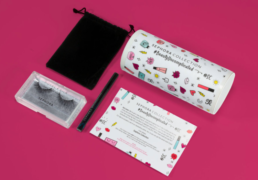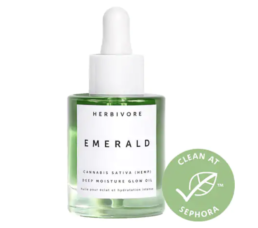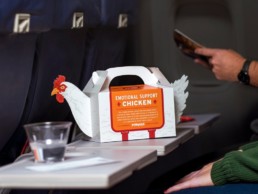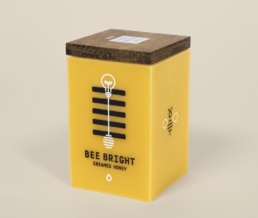Using Customer Loyalty Programs in Retail
marketing
With the rise of big-box stores, online shopping giants, and same-day deliveries, the retail landscape has changed dramatically in a relatively short period of time. Consumers now have the freedom and flexibility to shop for virtually anything, any time of day, and enjoy affordable pricing, free shipping, and other perks that were once unheard of in the retail world. Because of this, the competition between retailers has never been more fierce. It is getting increasingly difficult to build and retain consumer loyalty with so many options available to shoppers nowadays. This seismic shift in how people purchase necessities and luxury items has caused a struggle among retailers to keep up with changing trends, as well as a constant search for a magic formula to stand out against competitors.

One of the most popular ways retailers maintain a healthy, thriving customer base is through loyalty programs. Many larger retailers offer customer loyalty programs that offer discounts and rewards earned through purchases. This strategy is effective not only by giving consumers an added incentive to do their business with a particular store, but also by ensuring that customers are likely to spend even more money when they return to use their reward points or earned discounts.
What Makes a Customer Loyalty Program Successful?
In order for a retail customer loyalty program to gain success among its target audience, it should meet the following requirements:
No Cost to Join
If a customer loyalty program is free, customers are far more likely to sign up than if there were a monthly or annual membership fee. While some retailers do offer rewards programs that cost money to subscribe, the free loyalty programs are almost universally more successful and popular than the ones that charge.
Keep in mind, however, that in order for a retailer to support a free rewards program, they must be able to cover the costs of the goods or services that are being given away or reduced in price. A prime example of this is the Starbucks rewards program, which is free to join and incredibly popular among its customers. Recently, customers could receive any menu item for free each time they earned 125 stars, at the rate of one star for each dollar spent in the store. Additionally, certain promotional events allowed customers to earn double or even triple stars on special days or at off-peak, “happy hour” times of the day. However, Starbucks recently had to change its reward redemption structure, as it became clear that customers were using their earned rewards stars toward big-ticket items, such as salads and sandwiches, rather than much-cheaper cups of coffee. The rewards program now operates on a tier system, but this has not seemed to hinder the success of the program.
User-Friendly
From the basic structure of the customer loyalty program to the ease and convenience with which points can be redeemed online, user experience is everything. When rolling out a new customer loyalty program, a retailer must make sure that both the desktop and mobile website or app supporting the earning and redemption of points is intuitive, convenient, and simple to use. Additionally, the structure of the program should be easy to understand and clearly laid out to avoid confusion and frustration among customers.
Not surprisingly, the Amazon Rewards Visa is one of the most user-friendly customer loyalty programs in existence. A digital native, Amazon has always led the pack when it comes to innovating online retail systems, and its rewards program is no exception. Though becoming a Rewards Visa member does require signing up and being approved for an Amazon credit card, after that, the reward points are as easy to redeem as they are to earn – both on and off the Amazon website. Even more importantly, members are able to access their point balance and view past transactions, earned reward points, and more on the website or mobile app, making it convenient, easy, and, as Amazon itself would say, “frustration-free.”
Great Incentives
As consumers everywhere can probably tell you, not all customer loyalty programs are created equal. Some retailers, for example, offer things like “store cash,” which can be redeemed only during select weeks and take a percentage off of a future purchase, rather than giving a customer anything for free. A good rewards program should offer a healthy balance of same-day discounts and the ability to redeem points toward free items. Some of our favorite incentives give the consumer a choice of special addition kits which make them feel rewarded while also introducing them to new products.
However, the ease with which customers can receive rewards is just as important as the incentives themselves. A number of customer loyalty programs tend to make people spend far too much before parting with even the smallest incentive on the tier. Movie theater rewards programs are a notorious offender, forcing rewards members to spend literal hundreds of dollars on ticket and concession purchases before even being granted a free small popcorn valued at five dollars!
No Expiration Date
A reward earned should be a reward kept. However, some retailers have structured their customer loyalty programs to include expiration dates for discounts and free items, even though a consumer has earned the points fair and square. The expiration date strategy is a purposeful one, designed to make customers come back sooner. However, it can be a major turnoff to earn enough points for a large reward, only to be told by a sales associate that those points expired one week ago! By structuring a customer loyalty program with no expiration dates, you are showing customers that you value them as people, not dollar signs.
Chick-Fil-A does a very nice job of handling the balance between when points are earned and when they are redeemed. Their loyalty program allows customers to spend their accumulated points either little by little or in one lump sum. A customer can use the Chick-Fil-A mobile app to easily keep track of how many points they have earned, as well as which free reward items are available to them. Once a customer redeems a reward, it becomes a coupon that is only available for 24 hours, but since most customers wait to redeem their reward points until they are already at the restaurant, this system does not cause confusion or frustration for anyone involved.
By keeping your customer loyalty program simple, free, and easy to use, you will be able to provide incentives that entice consumers to keep coming back to your retail store over and over again. Follow these guidelines when structuring your customer loyalty program and you will have a devoted customer base in no time. How can Vivabox help you create a successful loyalty program? Contact us to find out.
Looking for a solution? We can help.
Headquarters
9211 Corporate Blvd Ste 110
Rockville MD 20850
Satellite Offices
Dallas, TX
Paris, France
San Francisco, CA
Scottsdale, AZ
info@vivaboxsolutions.com
Phone
800-529-1988
Minimum Order Quantities:
RPET Totes: 3,000
Kraft Shoppers: 5,000
Rigid Boxes: 3,000
Folding Cartons: 5,000
6 Ways to Use Packaging Strategies in Marketing
marketing
The concept of using product packaging as an effective and memorable marketing tool has been around for over 150 years. For over a century, companies have utilized creative packaging strategies to ensure that their products resonate in the minds of consumers and stand out against the competition. From the iconic shape of a Coca-Cola bottle to popular cereal-box mascots Snap, Crackle, and Pop, using product packaging as a means to cement a brand identity in the collective conscious is nothing new. However, thanks to advances in technology, we are now able to incorporate product packaging strategies into marketing more seamlessly and effectively than ever before. Creative minds at companies across the United States work tirelessly to make more and more innovative packaging decisions so that their products will be the ones their consumer base remembers.
With the abundance of packaging options available to product manufacturers, it can be difficult to select one that stays on-brand, creates excitement and appeal, and helps distinguish the product from its peers at a single glance. While you want to form a lasting impression among your audience, you also want to make sure they understand what your company and its products stand for, so they can build loyalty to your brand. Here are seven of the most popular ways to use a strong product packaging strategy in your marketing campaign.
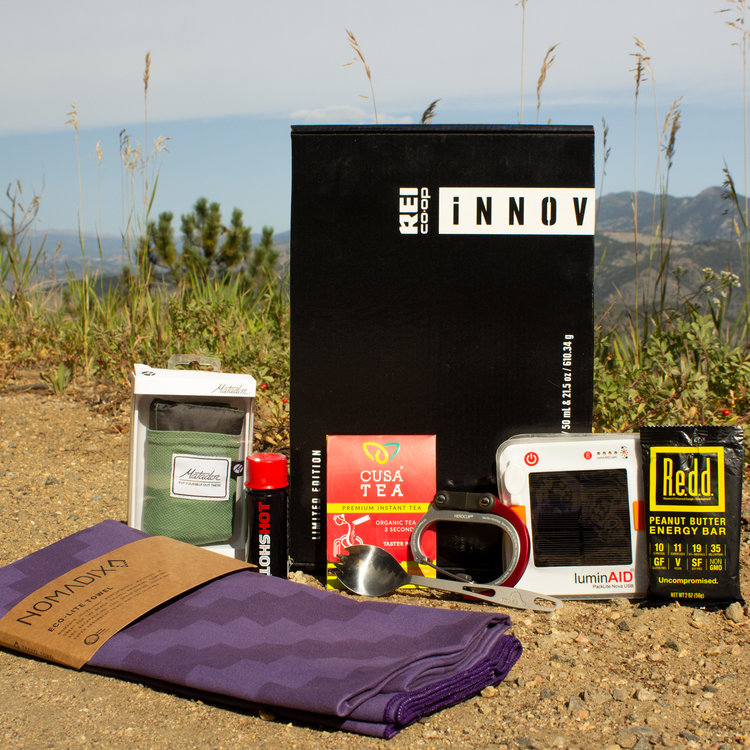
Keep it Green
As we continue to become more conscious of our collective carbon footprint, we are more interested in purchasing products with eco-friendly packaging. By choosing to package your product using biodegradable or reusable materials, you are letting your consumer base know that your company is deeply committed to preserving our environment. You can put your target audience’s mind at ease by using responsibly-sourced materials, such as plant-derived plastics, recycled cardboard, or natural fibers, in your product packaging, so that your consumer base feels good about supporting a company that cares about our planet.
Insta-Worthy Inspiration
We live in a society that loves to share photos of everyday life, and no platform makes it easier than Instagram! Your consumers are constantly on the lookout for “Insta-worthy” photos that will generate buzz on social media. Consider a packaging strategy that absolutely pops in a picture, whether your packaging is luxe, rustic, or just downright quirky. By packaging your product in a highly attractive way that looks amazing on Instagram, filter or no filter, you’re on your way to having it picked up by a brand influencer. This kind of exposure could skyrocket your business overnight!
Stay True to You
When consumers think of your brand and products, what adjective do you want them to use to describe you? The answer to that question can go a long way toward deciding on a strong packaging strategy. It’s important to let your choices be guided by your brand values, not the other way around. For instance, a family-owned company that makes and sells artisanal cheese probably will want their products to evoke imagery of tradition, legacy, and old-fashioned quality, while a company that manufactures high-end cosmetics may opt for ultra-luxe packaging that puts consumers in mind of glamour and celebrity status. No matter what type of product you sell, it is always important to make sure your packaging is in line with the rest of your branding.
Make it Limited
One sure way to generate excitement is to release limited edition products complete with special packaging. Perhaps you want to market goods that are only seasonally available, such as special coffee blends or candle scents, using holiday-themed packaging. Or maybe you have created anniversary-edition packaging to commemorate the number of years your company has been in business. No matter the occasion, a packaging strategy based on a timely or seasonal offering creates a sense of urgency that drives consumers to buy the items you are selling before they run out.

Send a Message
Does your company place value on being an ethical and responsible voice for certain political and social issues faced by members of you target audience faces? A number of companies choose to use their packaging as a platform for sending messages that correspond with the core beliefs of their organization. For instance, if your company is committed to promoting children’s literacy, you may want to use a packaging strategy that incorporates famous quotes from beloved children’s books. Similarly, if you own a business that strongly supports animal rights , you may wish to include messages that echo your commitment to the cause on all of your product packaging. You can use your products to educate your consumer base, which can make a huge impact on our society!
Simplify…and Save!
Sometimes the most effective packaging is none at all! If you are trying to convey a brand image of simplicity, it may be best to employ a minimalist packaging strategy. If, for example, you wish to reduce the wasted space created by standard food item packaging, such as a box or can, perhaps try to use a slimmer, more streamlined container to stand out. Not only does a packaging decision like this help distinguish a particular brand from the rest of the competition, but it also can help a company save money by cutting down on packaging costs. Additionally, a simplified container can add value for consumers who wish to cut down on unnecessary bulk for easier storage and disposal. By keeping it simple and designing product packaging that carries a lower profile than that of your competitors, you’re actually helping it stand out from the rest of the competition!
When choosing the right packaging strategy for your product, keep in mind that, first and foremost, you must choose something that will resonate with your target audience and cause them to select your brand over others on the market. The more you know about your chief consumers, the more you will be able to make informed packaging decisions based on what matters most to them, By sticking to your core brand values and knowing your audience, you can effectively market yourself using distinctive packaging that sets you apart from the crowd!

Looking for a solution? We can help.
Headquarters
9211 Corporate Blvd Ste 110
Rockville MD 20850
Satellite Offices
Dallas, TX
Paris, France
San Francisco, CA
Scottsdale, AZ
info@vivaboxsolutions.com
Phone
800-529-1988
Minimum Order Quantities:
RPET Totes: 3,000
Kraft Shoppers: 5,000
Rigid Boxes: 3,000
Folding Cartons: 5,000
What a White Label VIP Customer Care Service Could Add to Your Business
marketing
As a business looking for opportunities to get ahead in the marketing and service focus of modern retailing, your first instinct may be to do it all yourself. Unfortunately, that is not always the best solution.
Building a customized, high-touch VIP customer care solution from scratch by attempting to meet the exact specifications of your business can be time-consuming and complicated. That’s because building your own solution can lead you to make mistakes, like spending too much money developing tools and solutions that already exist in other formats, or you may miss out on resources and expertise in the specific space where you need a focused solution. Or you simply don’t have the bandwidth to train, monitor, and launch a specialized high-touch customer service team.
These pitfalls are easy to avoid if you opt for a white label solution, rather than building one yourself. White label products and services, like the Vivabox VIP White Label Customer Care Service, help you deliver on your Brand Promise & Customer Care commitment using our outsourced team who operate under your “banner” — that’s the white label part.
Vivabox’s White label VIP Customer Care Service offers you the following benefits:
-
High-touch, limited quantity & limited time only rewards, gifts, influencer packages, and pop-up shop gifts, and special experiences need a specialized customer care team experienced in delivering above and beyond. We do that for you.
-
Our team uses software, yes, but they’re people. Real people. Customer care experts adept at delivering special products and special value to your most important customers.
-
It’s quick and easy to brand. We represent your aesthetic, tone, and service level as if it was…you! White label solutions are generally fully integrated, which makes branding easy. You can be free from concerns about needing to spend time and money on research or development because white label services are doing the work for you. Simply enough, we help propel your brand’s experience for you so you don’t have to cut corners that could backfire on your brand identity.
-
You can scale your services portfolio. The most significant benefit of using white label marketing is to broaden your offerings. You don’t need to specialize in each and every service that you offer, and outsourcing provides a much broader range of services for your business.
-
You can focus on your core competencies. Core competencies benefit from scaling your services. In many cases, the solutions that companies hope to build themselves fall far outside of their areas of expertise. It’s not smart to stretch your resources to do something that doesn’t fit within your core competencies. Pre-packaged solutions offer your business an opportunity to trust the experts in the specific space you are focused on, and avoid making the same mistakes that others have made before you.
-
Improve your customer loyalty, retention, and NPS. Broaden your rewards and event strategies. With a third-party provider taking responsibility for most important service delivery, you can focus more time and effort on managing your retail spaces, relationships, and product array. Every time your Growth or Marketing team comes to you with a special promotion, or award tier, you won’t have to say no to them just because you don’t have the capabilities in-house.
White label solutions, like the one Vivabox provides, help businesses use unique branding and high-touch customer care so you can offer a product or service without investing in infrastructure or technology creation. Done and done — at the speed of today’s retail environment.
Looking for a solution? We can help.
Headquarters
9211 Corporate Blvd Ste 110
Rockville MD 20850
Satellite Offices
Dallas, TX
Paris, France
San Francisco, CA
Scottsdale, AZ
info@vivaboxsolutions.com
Phone
800-529-1988
Minimum Order Quantities:
RPET Totes: 3,000
Kraft Shoppers: 5,000
Rigid Boxes: 3,000
Folding Cartons: 5,000
ShopTalk 2019. The 10 Things Impacting Your Business Today & Tomorrow. VBX 2-Min Summary.
marketing
The engaging themes (scientific data point of most attendees and most number of mobile phones aimed at speakers and slides) at Shoptalk Las Vegas this past week were: accelerated change, AI, AR & VR-assisted experiences, influencer marketing, and the role of IRL store associates.
Our summary:
-
Shopping should be fun & social (literally and via mobile).
-
Buying should be easy.
-
Corporate silos need to make way for the pure fluidity of IRL —> Digital that consumers move through on their self-guided journeys to conversion and potentially, loyalty.
-
Caution Inhibits Innovation.
-
Hone a physical retail competency that creates moments worth lingering for.
-
The mobile screen is your new window display.
-
Change the metabolic rate of your company (esp. senior leaders)
-
Make Influencer and digital activations part of the product development process – not so late in the game. We call it the new marketing supply chain.
-
From Erik Nordstrom to Barney’s and Crate & Barrel executives, there was a light shone on the changing role of physical stores and the store associates inside. There was recognition that physical stores are a convenient (or at least can be) place to manage returns and for in-store pickup that puts CX front and center. Recognizing that means looking at the ways associates are trained and incented because this is a critical moment for consumers and can engender real loyalty. Additionally, it means (in our opinion) looking at attribution differently – for example, Nordstrom shared that 50% of their store visits begin online.
-
We’re struck by the efficacy of a high-concept custom box/bag kit to help bridge the shopping & buying divide. Like retailers and brands, we are leaning into smart packaging to make these experiences even more interesting for the consumers and to reveal new first-party data.
Vivabox works with CPG, Beauty, Mass, Specialty, Club, and Drug and in every category, the right trial, education, loyalty, and influencer box respects the privileged role of being in someone’s hands and home. Now that’s a brand experience worth sharing, talking about, and remembering.
Looking for a solution? We can help.
Headquarters
9211 Corporate Blvd Ste 110
Rockville MD 20850
Satellite Offices
Dallas, TX
Paris, France
San Francisco, CA
Scottsdale, AZ
info@vivaboxsolutions.com
Phone
800-529-1988
Minimum Order Quantities:
RPET Totes: 3,000
Kraft Shoppers: 5,000
Rigid Boxes: 3,000
Folding Cartons: 5,000
Augmented Reality (AR) 'Smart Packaging' Opens Up New Packaging Potential
marketing
We talk a lot about how packaging is one of the few tangible relationships a brand has with the consumer, as well as its importance to a brand’s narrative and loyalty. This recognition is based on the density of smartphone ownership, sales trends, and overall connectivity.
During a time when everything is mobile (yet everything still has a barcode), augmented reality (AR) packaging, aka digital or smart packaging, is here. It’s the next frontier in experiential branding because it offers enormous untapped potential for retailers and brands to revolutionize packaging and the way they connect and engage with consumers today.
At a time when marketing departments are spending more on digital advertising than ever before–and users are connecting to the web through mobile more than ever before–brands are sitting on an unrealized mobile marketing channel that’s been dormant in every supermarket, home, office, and shopping destination until recently.
AR packaging has become a new way of expanding a brand’s narrative–to offer background information in clever ways and to offer consumers a way to attach to the brand emotionally. It provides another innovative dimension to packaging that gives consumers a surprising experience.
A great example of smart packaging can be seen with Anheuser-Busch, which created a collectible Budweiser cup that lit up in response to crowd noise during the 2018 FIFA World Cup. There was a circuitry built into the beverage packaging that responded to environmental sound with LEDs that flashed, which visually riled up the crowd’s energy during games.
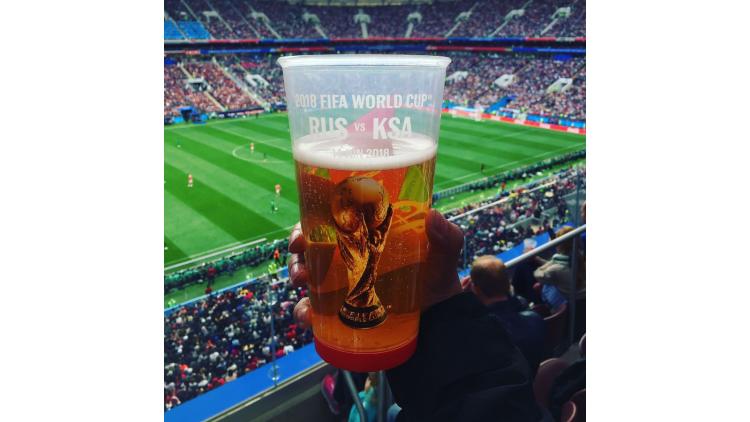
Packaging Digest (Aug. 29, 2018)
Another interesting, smart packaging design comes with “auto-replenish,” which was created by Amazon to support products that are regularly used and need regular refills or replacement. Products can use smart packaging to notify consumers when it is time to reorder so they can request more through their Dash Replenishment Services (DRS).
Researcher Pan Demetrakakes explains, “So far, smart packaging has been thought of mostly in terms of connection to ‘passive’ online information, like recipes or discount offers. However, it has the capability to unlock the full interactive potential of the internet.”
In light of such research, founder of London-based branding agency SharpEnd, Cameron Worth talks about the potential for smart packaging to integrate with the Internet of Things (IoT): “Traditionally, there has been no way to close the gap between the brand and consumer via the product, but now with the IoT, we can use smart packaging to bring brands directly into contact with individual consumers and use this opportunity to build brands post-purchase.”
At Vivabox, we are actively building event and influencer kit experiences with AR and thinking about how trial and loyalty consumer journeys can be impacted with smart packaging.
Although there is a practicality in association with the Internet and ordering, brands also have the opportunity to develop deeper brand connections through stories. For example, pasta sauce brand Francesco Rinaldi recently updated their brand with a smart packaging feature that enabled consumers to interact with brand spokesperson Mrs. Rinaldi. This digital approach allows consumers to pick up the jar from the shelf, scan it, and hear the story of the product directly from the brand “mascot.”

Packaging Digest, Dec 13, 2018
These variations of smart packaging also offer brands some essential opportunities/thought starters:
-
Imagine picking up a trial item, turning on your AR to hear from the perfumer who made the product waxing poetic about the formula and the ingredient origins Star Trek style in the aisle of the store or pop-up.
-
Extend the available real estate for product messaging and promotional offers.
-
Increase brand engagement especially via social sharing while this is still relatively new.
-
Serve contextually relevant information at the point of purchase and consumption.
-
It also drives better consumer data by offering real-time data analytics on a serialized basis, creates a better understanding of users, and helps deliver more measurable results and value-added benefits to customers.
Vivabox can help you with better packaging and connect you with AR experiences to help take your brand story to the next level of digital packaging sophistication.
Looking for a solution? We can help.
Headquarters
9211 Corporate Blvd Ste 110
Rockville MD 20850
Satellite Offices
Dallas, TX
Paris, France
San Francisco, CA
Scottsdale, AZ
info@vivaboxsolutions.com
Phone
800-529-1988
Minimum Order Quantities:
RPET Totes: 3,000
Kraft Shoppers: 5,000
Rigid Boxes: 3,000
Folding Cartons: 5,000
How Packaging and Branding are Bringing CBD Mainstream
marketing
Research that addresses the benefits of cannabinoids (CBD) on the human body is becoming more recognized and accepted, and the awareness of wellness, skin care, and CBD is part of that growing recognition. PSA: cannabinoids and get-you-high marijuana are not the same things. CBD does not contain the ingredient that gets you high (THC).
There is still a ways to go, as the FDA continues to move slowly in its endorsements for cannabinoids and it is not yet legal in several states, but there are many companies, startup and established alike, currently embracing–within legal parameters–CBD in beauty and beverage products, especially as state and federal laws become more inclusive of CBD products.
As the public becomes more aware and accepting of the benefits of CBD in beauty products (and beyond), branding and packaging will be a key step to consumer trust and confidence, especially in these transitional stages.
More than that, though, new entrepreneurs and brands are doing away with marijuana-leaf logos and demystifying the dosing and buying of CBD by providing education and premium packaging designed to increase both understanding and acceptance of these products and this ingredient.
First, a Quick Science Lesson
In a recent CBD for Life article, they explain that scientific researchers have shown undisputable CBD connections beneficial to the human body. “It is because of how CBD communicates with the endocannabinoid system,” the article said. The human body has a system of endocannabinoid neurotransmitters, or receptors, and “These receptors are spread throughout the body, but are observed mostly in the skin.”
What has been scientifically proven is that the human body has a natural endocannabinoid system, which means there is a chain of receptors that connect every part of the human body, from the tissues–to the nerves–to the mind. Phytocannabinoids are produced in nature (the marijuana plant system, for example) and can be consumed by the human body to create a relationship of benefits. Although cannabinoid products can be found in other types of plants, like echinacea, liverwort, pepper, and even chocolate, CBD in phytocannabinoids just so happens to have the most potent and beneficial effects for the human body.
CBD and the Beauty Industry
According to a January 2019 report by Beauty Packaging, “Cannabis is known for stress-reducing and pain-relieving benefits. Use of CBD products [for skin] can reduce redness, irritation and even acne.”
Neiman Marcus recently introduced their CBD beauty line and Kim D’Angelo, beauty buyer at Neiman Marcus, recently explained that
“Cannabis beauty brands are becoming increasingly popular and CBD products are the next big thing in beauty.” Such products are comparably priced to other luxury brands like Sephora, L’Oréal, and Estée Lauder.

https://www.neimanmarcus.com/p/ildi-pekar-sleeping-mask-infused-with-cbd-oil-1-1-oz-30-ml-prod219110020
Neiman Marcus I-Pekar CBD Oil Skin Care
Another well-established company, Barneys New York (as well as their locations in Chicago, Beverly Hills, and Las Vegas), has also released a new CBD skin care line “Lab to Beauty.” They promote their products by touting “the pure potency of plants, combined with the healing effects of CBD.”

https://www.barneys.com/product/lab-to-beauty-the-cbd-drops-506111933.html
Barneys New York “Lab to Beauty”
More so, independent startups like CBD for Life and Fleur Marché are offering quality products and walking consumers through the process if they are unsure of their state’s legal boundaries. Furthermore, their packaging starts to play more on the natural, sustainable elements of cannabinoids rather than the more stereotypically rebellious aspects.
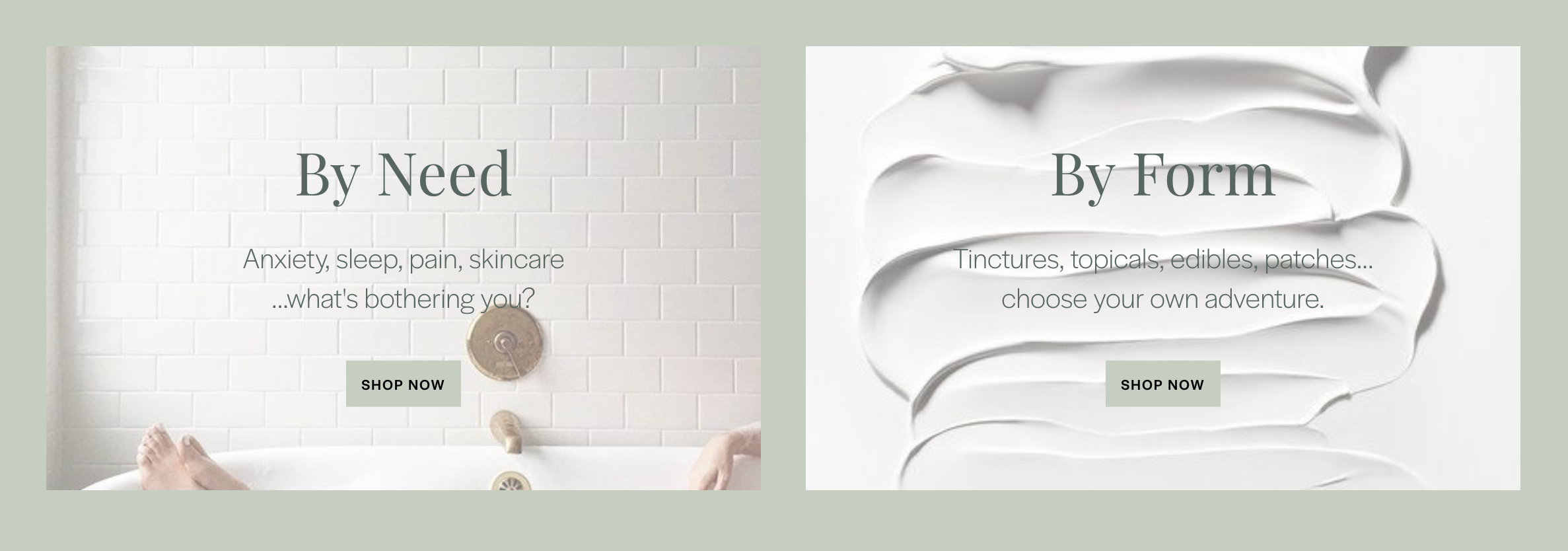
https://fleurmarche.com/
Fleur Marché
Of course, because of current restrictions, they are only sold in locations where states have already legalized medicinal and/or recreational use as well. Although this is an initial hindrance for the mass consumer, the trend shows CBD and other cannabinoid products are becoming more accepted and could soon be in a store near you, or at least online ordering without repercussions. It is the subtle and medicinal message that continuously needs more strategic attention.
Why Packaging and Branding Matters
Now that we have addressed scientific and legal issues (phew!), let’s get down to how packaging becomes the perfect bridge between consumer skepticism and confidence, as well as overcoming cannabis industry stigma.
Most consumers are still unaware of the differences between hemp, THC, and CBD–and the image of legalization is a narrow one, which depicts a “4:20” recreational lifestyle or, say, images of Shaggy from Scooby Doo: “Zoinks!” This is an unfair representation, and many consumers are starting to understand this. But the packaging and branding industries can easily help alleviate this. Here are a few examples:
First, Vivabox has been addressing the importance of sustainability with our clients, and in an industry like cannabinoids, it is a primary concern. As organic products take a lead in more sustainable packaging (or at least they should), the CBD industry tries to adapt similar branding and packaging objectives: from the Earth, for the body. These connections are beautifully symbiotic.
For those consumers who are already on board with CBD (or any other cannabinoid product), it is an added perk: brown glass bottles, eco-alternatives to bubble wrap–like green wrap or corrugated bubble wrap–and packaging made of 100% recycled boxes, soy ink, and recycled filler/packaging paper. And for those who require more subtle branding and packaging, leave off the marijuana leaf in the design, or at least downplay it.
Consumers are savvy and they don’t want to be reminded of the stigmatic images (even if they rationally know much of it is incorrect). If consumers are dropping premium prices for premium CBD products, they also (if only subconsciously) require smart and subtle branding and packaging. It is a tightrope walk these days, but packaging can also create change in perspective and offer consumer confidence.
Here are a few examples of how Sephora (current client) is creating a balanced brand and packaging campaign:
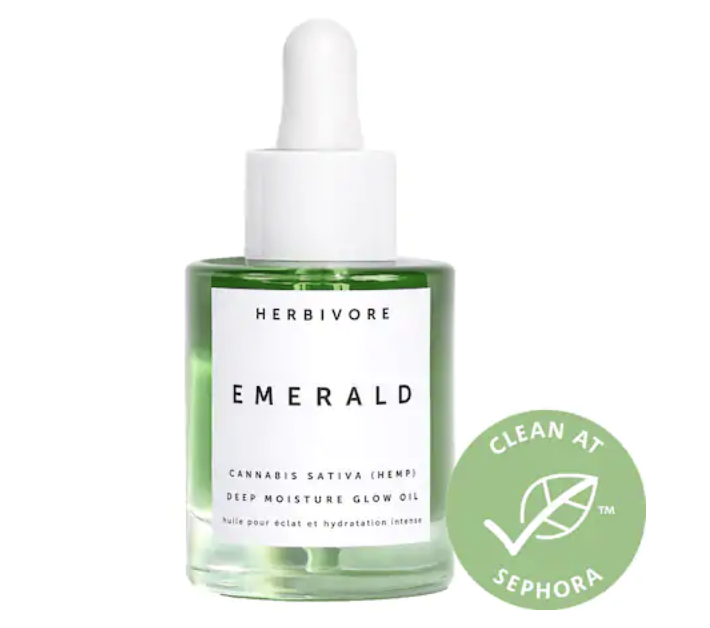
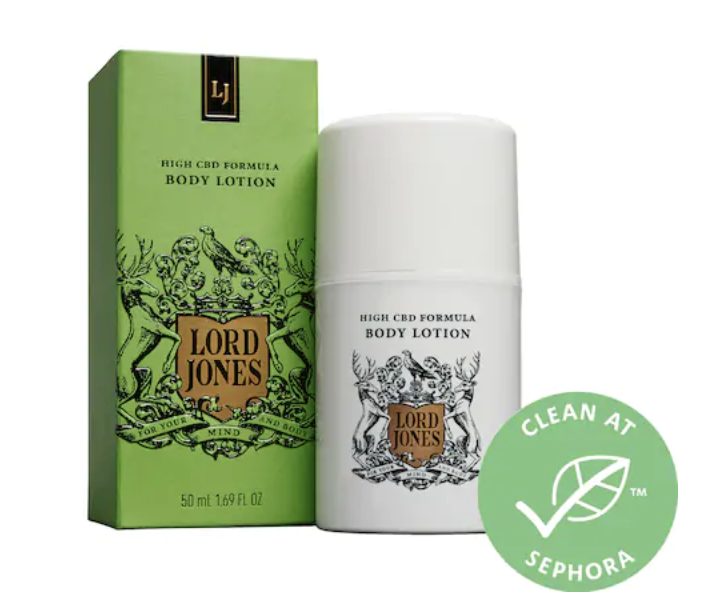



https://www.sephora.com/search?keyword=cbd
Sephora: Herbivore Organic, Lord Jones, Kiehl’s, Josie Maran, and Milk Makeup CBD products
For instance, although there are marijuana references, “Kush” and “Dope,” for Milk and Josie Maran primary packaging, it is not at the expense of good branding and messaging. More so, the Kiehl’s and Herbivore pale green glass (an organic go-to) and high-end typography and packaging suggest they are in on the fun of being able to publicly talk about “weed” while not forsaking their commitment to high quality products.
The rhetorical strategy here does not shy away from its contents but rather marks it acceptable by way of common packaging found in similar non-CBD beauty products. As for the following packing for Vertly, apothecary and luxury elements are used to validate CBD’s confirmed medical and beauty benefits.
The conversation is inherently, “Why would Sephora, Barney’s, Neiman Marcus support this if it wasn’t true?” And the perk? Consumers can buy these and not come off as a “pothead,” and let’s face it: that is what many mainstream consumers fear. This transition from stigma to benefit is all in the packaging. Period.

http://nymag.com/strategist/article/best-cbd-skincare-products.html
Yes, informing the general public of the differences between TCH, CBD, and Hemp are important. They have very different purposes, but CBD has the opportunity to brand itself as something outside of the “4:20” culture. The CBD PR movement all starts with education, but really, it is best promoted with packaging and branding first. These high-end companies have figured it out: the medicinal benefits have become better received in many states, and are recognized as having premium perks for those who can afford it. Packaging that reinforces positive branding while eliminating harmful cliches is possibly the most important first step.
Smart branding and packaging (which is one and the same these days) is the best move forward for beneficial products which were once stigmatized, but no longer are. At Vivabox, we’d like to see a multi-branded CBD ‘starter’ kit with great branding, education, trial, and social media hooks. It’s exciting to see packaging as much more than a box. To us, it’s where the story starts.
Looking for a solution? We can help.
Headquarters
9211 Corporate Blvd Ste 110
Rockville MD 20850
Satellite Offices
Dallas, TX
Paris, France
San Francisco, CA
Scottsdale, AZ
info@vivaboxsolutions.com
Phone
800-529-1988
Minimum Order Quantities:
RPET Totes: 3,000
Kraft Shoppers: 5,000
Rigid Boxes: 3,000
Folding Cartons: 5,000
Know Your Customer: Developing Personas for Packaging Strategy
marketing
The key to a successful marketing or branding campaign starts with understanding your target audience, and, a well-defined audience begins with developing buyer personas. In the age of IG and e-commerce, your primary and secondary packaging design should most definitely be part of your CX process and strategy.
A buyer persona is defined as a well-developed character created from customer trends and demands. Most companies attract more than one group of people, so they find it beneficial to develop three-dimensional personalities with names, ages, occupations, certain social statuses, education levels, aesthetic principles, family size, buying trends, and more. Brands interact with people, not cardboard cutouts, so developing these personas are helpful to create a range of insights.
Simply put, developing personas is important, and it is incredible what insights surface when companies take the time to get to know them.
Personas and Packaging
When thinking about brand development and the multiple personas you must nurture, packaging becomes a primary touchpoint. Outside of the actual product, the package is the most tangible branding tool a business has, and these personalities can have a significant impact on your design strategy.
For example, if you’re targeting an older persona, you may want to work with more traditional packaging or play with nostalgic designs that tug at their heartstrings or work with packaging that can be repurposed. You also want to assess your font size and contrast and including smart and obvious ways to open the package for hands that have lost some dexterity.
If you’re going to attract a millennial persona, you may want to develop a more sustainable solution that works with contemporary or forward-looking design and trends. And be sure it has an element of IG-bait.
Packaging the same product in different ways can be a great way to embrace all of your personas without exclusion.
The Power of Personas
Once your business has developed well-rounded personas, what can you do with them? You can do anything! Hopefully, you use them to make every brand decision. Considering that it is the consumer that creates demand, it is essential that all marketing and branding strategies keep all personas in the forefront of every decision.
Consulting personas for insights into what your audience will identify with and what will capture their interest is essential to determining the shape, font, color, textures, and materials you use in your packaging design.
As you develop your packaging for your personas, don’t forget to measure your successes and room for improvement. Analyzing past data and current customer responses is a great way to test if your packaging ideas are meeting consumer standards and how they may be changing. Don’t let your personas get stagnant. They should be an ever-changing point of reference to keep your brand, and packaging, moving forward.
Looking for a solution? We can help.
Headquarters
9211 Corporate Blvd Ste 110
Rockville MD 20850
Satellite Offices
Dallas, TX
Paris, France
San Francisco, CA
Scottsdale, AZ
info@vivaboxsolutions.com
Phone
800-529-1988
Minimum Order Quantities:
RPET Totes: 3,000
Kraft Shoppers: 5,000
Rigid Boxes: 3,000
Folding Cartons: 5,000
The Touchpoint that Matters More than Most: Storytelling with Packaging
marketing
Not only does your packaging carry a product, but it also delivers an experience, and when it is done right, it can be a great experience. It’s not just a means to an end anymore, it is part of a unique customer narrative that is part of the full marketing and customer experience (CX) strategies.
For most brands, the packaging is the most tangible part of the shopping experience, whether it is ordered digitally or picked off of a shelf in a store. So as e-commerce becomes more prevalent, packaging becomes even more critical. It is a physical manifestation of your brand that you cannot overlook. Packaging should be part of your brand’s narrative–it should tell your story and the story of the product inside. It has become such an excellent way to fully embrace your customer (and they will hug you back).
Unlike physical retail, e-commerce businesses have fewer touchpoints to attract and amaze customers, so it’s essential to use every tangible moment to create a branded experience that sets you apart from competitors. You can have the best product in the world, but if the packaging does not contribute to the bigger picture, it can become a lackluster, and sometimes frustrating, experience.
In a recent study by Dotcom Distribution, they found that 52% of consumers are likely to make repeat purchases from an online business that delivers premium packaging and 4 in 10 consumers would share an image of the packaging on social media if it were unique or aesthetically pleasing.
Here are three sure-fire ways to think about the box and how it can become a part of your brand’s story:
1. External Design
The external packaging should guide consumers into the experience before they ever start to open it. From the moment they see and touch the package, they should understand the story you’re telling. Whatever colors, materials, textures, typography, or copy you use, your external packaging should evoke certain feelings and emotions.
For example, Bee Bright’s creamed honey comes in wax packaging with a wooden lid. Once the product inside is used, the wax packaging can be turned upside down, mounted on the wooden lid, and used as a candle.

Such clever uses of colors, textures, and the ability to reuse the packaging beyond its initial purpose creates a beautiful consumer experience every step of the way.
Another original example of packaging design that tells a story is used by Thelma’s bakery. A simply designed box made to look like an oven creates a quirky narrative of freshly delivered cookies straight from the oven.

These examples offer simple solutions for branding that packs a serious punch. When the packaging is as coveted as what’s inside, that’s a brand experience!
2. Internal Wrapping and Messaging
Once the box is opened, the experience should continue. More brands are making sure to use every surface outside and inside the box to tell their story. Whether a company uses tissue paper with branded seals, textured ribbon or twine to embellish the products, or an additional message on the inside of an opened box lid (or a combination of all of these), every piece of the internal narrative should be intentional.
A great example of internal branding can be found in a Trunk Club box. Not only does it have sophisticated, well-designed, and pertinent information on the inside of the lid, the clothing in the box is wrapped in a natural-colored, cotton ribbon and there is a handwritten note from the stylist to give the experience a uniquely personal touch.

This is a perfect example of how simple touches can make an incredible difference in a brand experience and not break the bank. This is the stuff that creates customer loyalty.
3. Packaging Inserts
Marketing collateral and package inserts are wonderful ways to attach additional messaging, offer future discounts, or announce up-and-coming products. It is a cost-effective and versatile medium for building a solid relationship and keeping them coming back for more. Not only does your brand get another chance at engaging the customer, but it is something the customer can take away for future use. Simply put, a well designed and targeted insert can increase customer loyalty.
Companies like Gale Leather offer aged-looking paper with product information printed in brand-specific typography and treats like Turkish coffee or a tea sample. Something so simple means a lot to a consumer because it makes them feel special.

Inserts are always a great way to add a personal touch for very little cost to the business, and the payoff for such small sentiments can be considerable.
Think about how your brand can up the ante on its narrative with packaging. By creating clever, personal, and elegant presentations, you give your customers a full buyer’s experience before they ever get to the end product.
Looking for a solution? We can help.
Headquarters
9211 Corporate Blvd Ste 110
Rockville MD 20850
Satellite Offices
Dallas, TX
Paris, France
San Francisco, CA
Scottsdale, AZ
info@vivaboxsolutions.com
Phone
800-529-1988
Minimum Order Quantities:
RPET Totes: 3,000
Kraft Shoppers: 5,000
Rigid Boxes: 3,000
Folding Cartons: 5,000
What Influencers Really Want From Marketers
marketing
We ran surveyed 2,000 US-based influencers in May 2018 to uncover what influencers really want from the marketers they’re working with and all of those boxes they’re receiving.
First some context:
Over 50% of influencers receive 1-6 boxes weekly
Only 47% rate it as a “good” experience.
What Influencers Really Want:
• Creative respect
• Feel special
• Be invited in
• A VIP communication loop
• IG-Friendly packaging
• Paid marketing support
• To get paid. Real money. On time.
• Key dates for the product launch or availability
• Let them know when the box is arriving
• Brand story and origin
• The story behind the product/s, the design, purpose, ingredients and origin story
• A sincere thank you
• Photography gear (micro)
• Extra kits to give way to their audience (micro)
• Help to grow their audience
• A handwritten note, something that makes them feel special
Proprietary Vivabox research of 2,000 micro and macro influencers in the US, May 2018
Looking for a solution? We can help.
Headquarters
9211 Corporate Blvd Ste 110
Rockville MD 20850
Satellite Offices
Dallas, TX
Paris, France
San Francisco, CA
Scottsdale, AZ
info@vivaboxsolutions.com
Phone
800-529-1988
Minimum Order Quantities:
RPET Totes: 3,000
Kraft Shoppers: 5,000
Rigid Boxes: 3,000
Folding Cartons: 5,000
How do I Develop Strong Relationships with Influencers?
marketing
Ask the Fixer: When it comes to finding the best ambassadors for your brand, it can be overwhelming to know where to start. Here we launch the Ask the Fixer series with three experts who offer advice for building mutually beneficial relationships with the right social media influencers.
Melaina Juntti | Jul 27, 2018
Without question, influencer marketing can bring immense value to your burgeoning brand. It can help spread the word about your products, create engaging content and lend credibility to your company, among countless other benefits.
But making this strategy effective takes much more than just getting a long list of “big names” on board. It requires building solid, open, honest and mutually beneficial relationships with the right influencers. By doing so, you get “better content, better product insights, better ROI—plus, genuine community is good for the soul,” says Rachael Shayne, senior director partnerships, sales, and marketing at Vivabox.
Here, Shayne and two other “Fixers” share their best advice for building strong relationships with influencers.
Brand
Choose influencers who truly believe in your brand. We receive several partner requests daily, many of which I disregard immediately because they don’t send personalized emails; I can tell it’s a blanket outreach. The influencers I want to engage with are those who take the time to share with me how they use NOW products as part of their daily routine—those who truly use and trust our brand. On the flip side, we take the time to have actual conversations with them and get to know what’s going on in their lives versus having just a promotional relationship, such as they’ll do X content for X fee. We are a family-owned company, and we truly want to make our partners feel like they are a part of the family.
Start small. When we are considering working with a new influencer, we will often do a “test run” to see how well our partner content performs. We’ll maybe do just a small initiative, such as a one-time Instagram share, for a smaller fee. This also allows us to build a relationship because we can gauge which content will be most meaningful with that influencer and his or her audience and then do more from there.
Bring influencers inside. We host “influencer immersions” at our headquarters a few times a year. We’ll bring in about 20 influencers from across the country for an inside look at NOW. Transparency is so important in this industry, and this really provides them with an “aha” experience because they see the lengths we go to ensure we are bringing safe, quality products to market. It’s also a way to show the influencers that we value their trust and partnership, since this is the ultimate trust-building opportunity.
—Alana Horinko, public relations manager at NOW Foods, a leading national brand of dietary supplements and other natural products
Agency
Get personal. When seeking influencers, don’t be a spammer—influencers are people, too, and nothing kills the mood more than a bland, impersonal e-blast. Their inboxes are flooded with opportunities daily, so make sure yours stands out. Call them by name, show interest in their life or brand and intrigue them with more than just the depth of your pockets. Show your personality and build an actual relationship, not just a business transaction.
Be honest and transparent. Don’t make promises you can’t keep. Be honest with influencers about the type of partnership you’re interested in and what you’re able to offer. Be flexible in your needs, and it’s likely they will be flexible, too. If you have a good product that is a great fit for the influencer and their audience, chances are you’re going to get more bang for your buck.
Remember: benefits go both ways. No one loves hearing how much someone can help them. Consider how you can make the relationship benefit the influencer as well. Outside of filling their pockets, what other ways can you add value to the deal? Can you give access to your audience, boost their reach or support their cause or event? When you get creative, you can end up with unique, mutually beneficial and often cost-effective partnerships.
—Denise Lambertson, founder and chief connector at LMS, a boutique entertainment marketing agency specializing in solutions for growth-stage and emerging brands
Marketing
Support successes and nurture creativity. Celebrate your influencers’ personal milestones and successes—and do so genuinely. Be a fan. Also appreciate their creative ideas and influence—isn’t that the reason you’re using an influencer strategy to begin with? Respect their creative abilities and give them ideas to build on versus supplying fully baked content. If they are simply posting your brand imagery, their followers will sniff it out and their reactions won’t help the influencer or your brand grow.
Supply sufficient info. Be sure they know your brand story: why the product is being launched, why you think it will be great, what the ingredient story is, where it can be bought, for what price and when it’s available. You can also share relevant research, information about your category or even influencer marketing reports, and help them understand FTC guidelines for posting if they don’t already. If you have a super kick-ass social media manager, have them offer your influencers classes about how to grow their followers, how to use new video editing tools, how to get the best lighting, etc.
Compensate adequately. This is a business for influencers, so pay them with real money—and on time—not just with products. Beyond dollars, you can also compensate influencers with products, attention, access to your network, referrals, tools and resources. For instance, you can share analytics or a membership to a stock photo site. Also give them credit in product meetings for uncovering new insights, and then tell them how the team reacted to their idea and thank them for helping build your business. Send them unexpected and personal small gifts that aren’t directly brand related, and never forget the power of a handwritten note expressing authentic thanks.
Looking for a solution? We can help.
Headquarters
9211 Corporate Blvd Ste 110
Rockville MD 20850
Satellite Offices
Dallas, TX
Paris, France
San Francisco, CA
Scottsdale, AZ
info@vivaboxsolutions.com
Phone
800-529-1988
Minimum Order Quantities:
RPET Totes: 3,000
Kraft Shoppers: 5,000
Rigid Boxes: 3,000
Folding Cartons: 5,000



